By Nathan Kauffman, Vice President and Omaha Branch Executive and Ty Kreitman, Assistant Economist
Agricultural credit conditions in the Kansas City Fed’s Tenth District deteriorated at a slightly faster pace at the onset of developments related to COVID-19. The survey for the first quarter of 2020, distributed in mid-March, indicated a larger decline in farm income and loan repayment rates than in recent quarters.
Looking ahead, bankers indicated their expectations were much more pessimistic. Beyond the survey period, further disruptions at meatpacking and food processing facilities and a substantial slowdown in ethanol production put heavy downward pressure on cattle and corn prices. Through early May, cash prices for both since January had declined more than 20%, adding pressure to already stressed farm finances in the seven states of the District.
Farmland Values
Farm income in the Tenth District weakened alongside a steep drop in agricultural commodity prices that began in March. The pace of decline in income was noticeably faster in the first quarter than in the previous quarter amid intensifying concerns related to COVID-19 (Chart 1). Spending by farm borrowers also weakened slightly, but less abruptly than farm income. Corn and cattle comprise a large share of total revenues in the region and as the survey began in March, prices of both had decreased about 15% since January. Even after the first quarter survey, the declines continued through early May, putting added downward pressure on revenues for producers.
After improving slightly at the end of 2019, the share of bankers reporting lower farm income increased sharply in the first quarter. About 60% of respondents across the region indicated that farm income was lower than the same time a year ago, the highest share since early 2017 (Chart 2). The outlook was more pessimistic in every state except the Mountain States of Colorado, Wyoming and New Mexico, with nearly three-fourths of all banks indicating they expect farm income to be less than last year.
Persistent weaknesses in the agricultural economy in recent years have weighed on many farm households. Only 15% of responding banks reported that overall financial conditions for farm households were stronger than non-farm households (Chart 3). Respondents indicated the relative weakness of farm households was felt more strongly in Kansas, Oklahoma and the Mountain States and less so in Missouri. Compared with other states, conditions in Nebraska were more varied.
Farm Finances & Credit Conditions
After showing some signs of stabilizing in previous survey periods, credit conditions also deteriorated more quickly in the first quarter. Similar to farm income, farm loan repayments declined at a faster rate than recent quarters (Chart 4). The pace of increase in loan renewals or extensions, as well as collateral requirements, also ticked up from the last survey period. In addition, these credit conditions were expected to turn more negative in the second quarter as banks assessed the likely economic difficulties surrounding COVID-19.
Following a path comparable to farm income, the percentage of respondents reporting lower rates of repayment also increased. Over half of all banks continued to report no change in repayment patterns, but about 40% reported a decline, the largest share since early 2017 (Chart 5). The outlook also was more pessimistic in every state except the Mountain States.
Demand for farm loans remained high, but the scale of the increase was similar to recent quarters. Since mid-2019, farm loan demand in the region has shown some signs of slowing (Chart 6). Also continuing a more recent trend, fund availability increased for the second straight quarter. Likely in anticipation of increased financing needs, both loan demand and availability of funding were expected to diverge from current trends in the next quarter.
As lending demand remained elevated moving into renewal season, borrowers’ financial conditions continued to deteriorate at a steady, but gradual pace. Revenues remained subdued for many producers in 2019, and the share of borrowers with an increase in carryover debt was similar to the prior 2 years with some differences across states (Chart 7). Compared with last year, increased carryover debt was slightly more prevalent in Nebraska and Oklahoma, but slightly less so in Kansas and the Mountain States.
The reduction in farm income and revenue also continued to put steady, but modest pressure on liquidity. About 15% of all originated or renewed farm loans throughout the region involved restructuring to meet short term funding needs, comparable with the past 2 years (Chart 8). Similar to changes in carryover debt, instances of restructuring also increased slightly in Nebraska and Oklahoma and declined slightly in other states.
Alongside a deterioration of borrowers’ finances, bankers denied a modest amount of loan requests, but the share was lower than the past few years. In fact, less than 5% of all farm loan requests throughout the region were denied due to cashflow shortages, the lowest since 2016 (Chart 9). The rate of loan denial was lower in all states expect the Mountain States, where the share increased modestly.
Respondents indicated trade relief payments have provided notable support to their borrowers’ finances. Across the District, nearly 90% of banks indicated that payments provided at least moderate support to farm income and loan repayment (Chart 10). Based on bankers’ responses, support from payments was relatively more significant in Kansas, Missouri and Nebraska and less so in Oklahoma and the Mountain States.
Interest Rates & Farmland Values
Interest rates on all types of farm loans declined sharply alongside the recent decrease in benchmark interest rates. Variable rates for all types of lending declined at least 90 basis points from a year ago and fixed rates on all loans were at least 80 basis points lower (Chart 11). The fixed rate on farm real estate loans declined to the lowest first quarter level on record, but all other rates remained between 10 -30 basis points above historic lows.
Despite a more pessimistic environment for farm income and credit conditions, farmland values remained relatively steady. Both non-irrigated cropland and ranchland values increased slightly for the second consecutive period (Chart 12). Looking to the next quarter, slightly less than 70% of bankers indicated they expect non-irrigated farmland values to remain unchanged compared with a year ago; about 30% anticipated a decline.
Conclusion
The initial effect of developments surrounding the COVID-19 pandemic weakened the outlook for the agricultural economy considerably and weighed on farm finances. The share of bankers reporting lower farm income and loan repayment rates increased sharply and expectations for coming months also turned more pessimistic. Providing some support to farm finances, interest rates on agricultural loans declined and farm real estate values remained relatively stable. Weaknesses in some agricultural commodity markets continued to intensify in recent weeks and further weighed on already subdued farm revenues. However, government payments appear likely to provide notable relief to segments of the farm sector again in 2020.

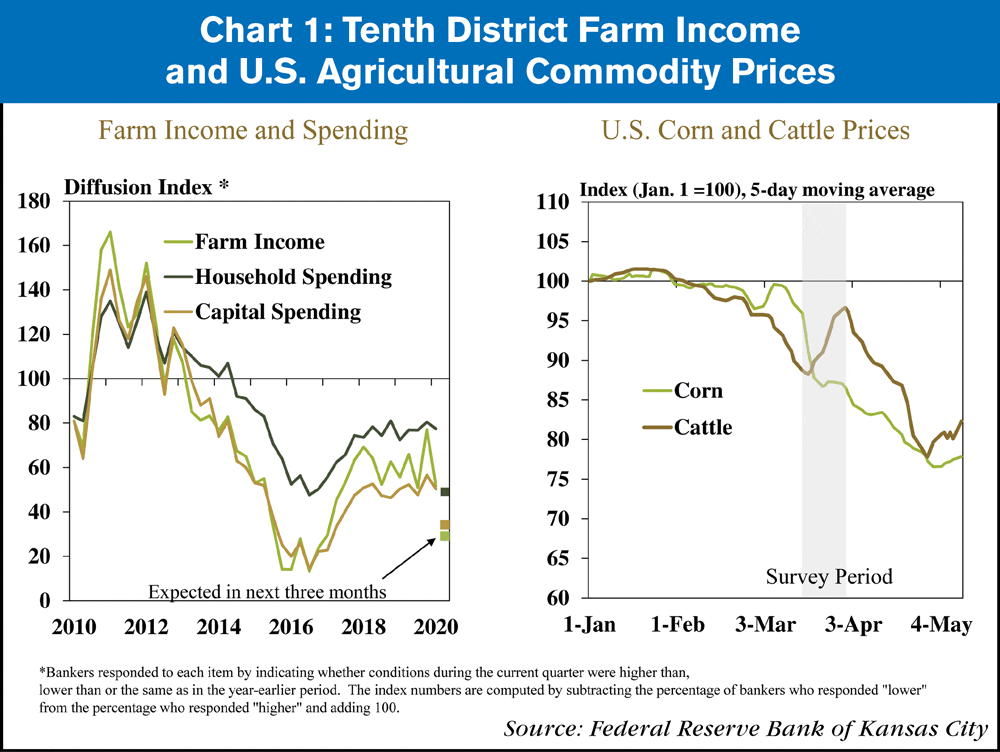
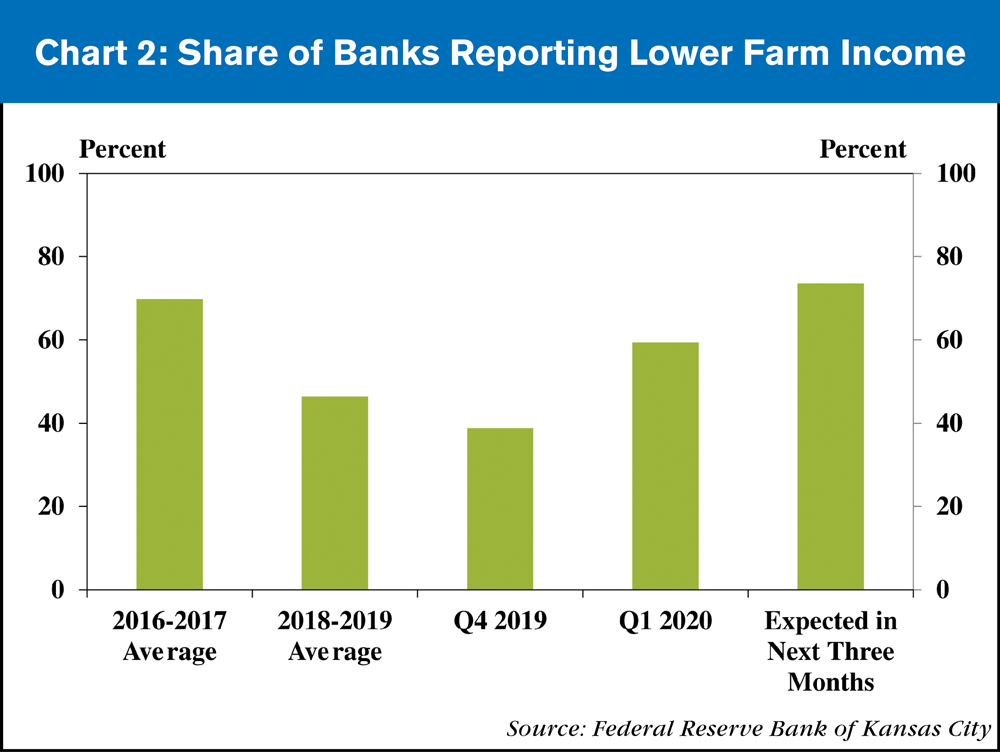
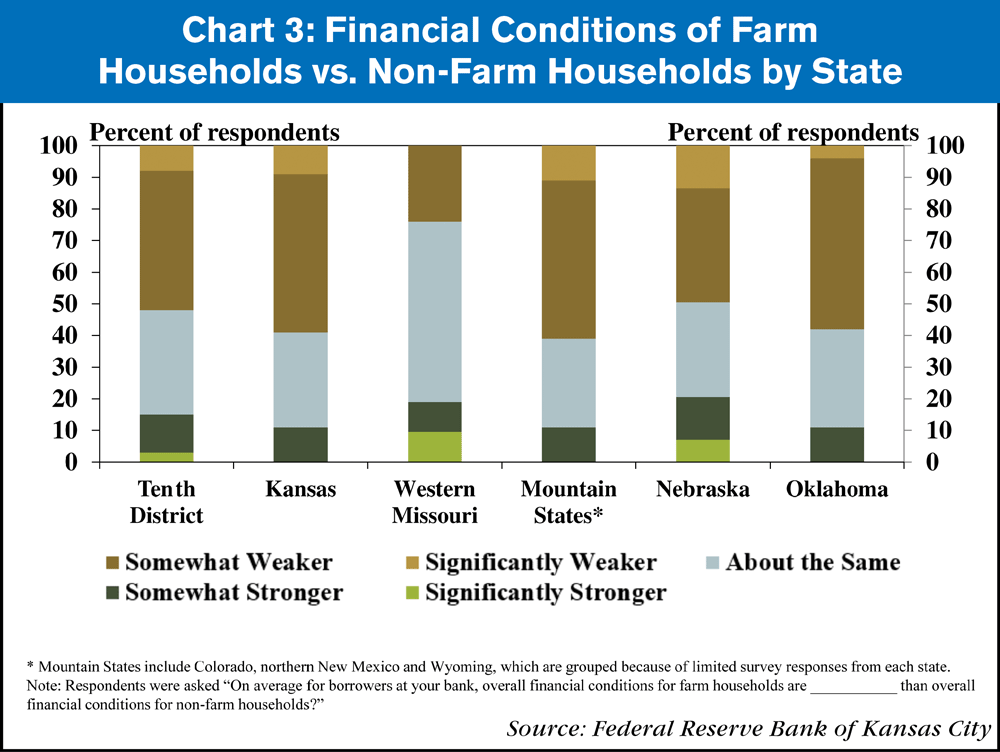
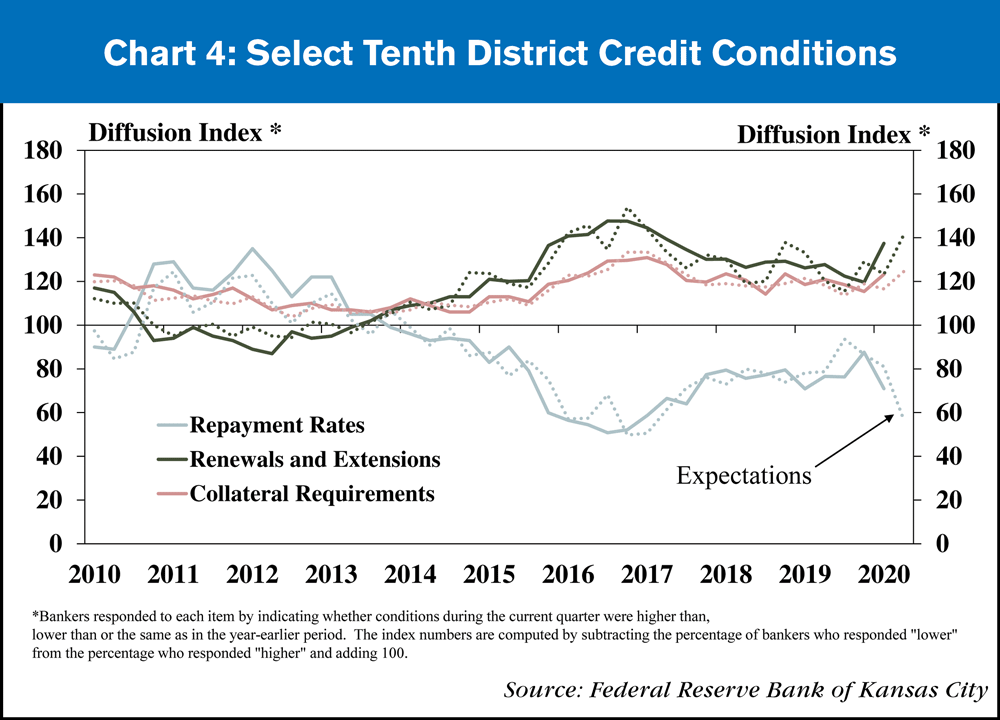
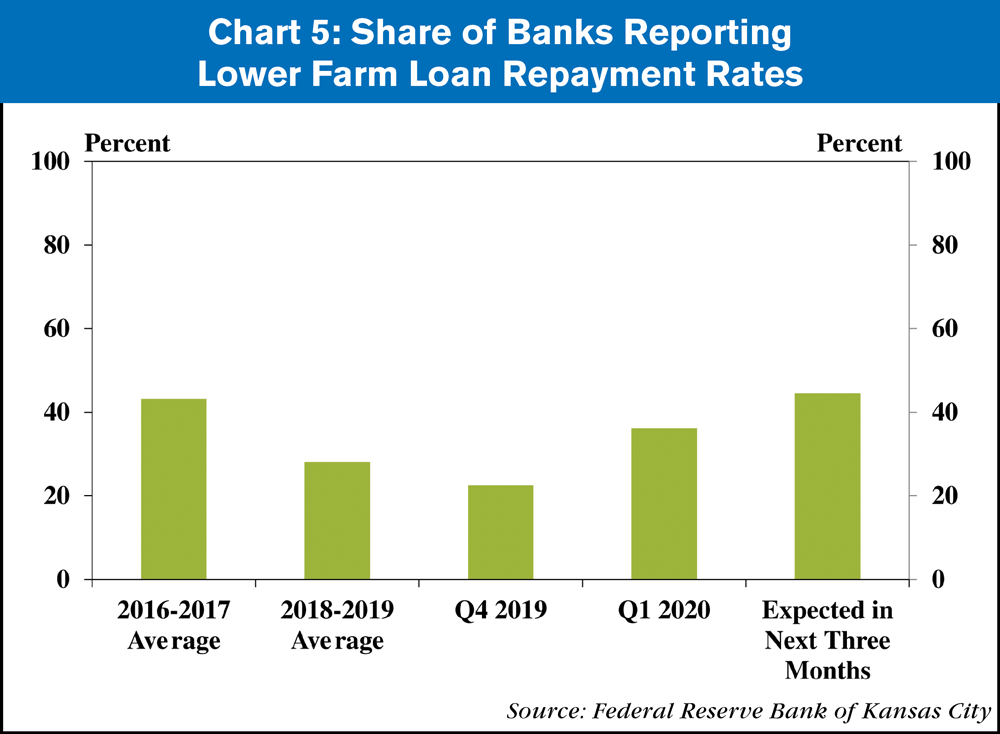
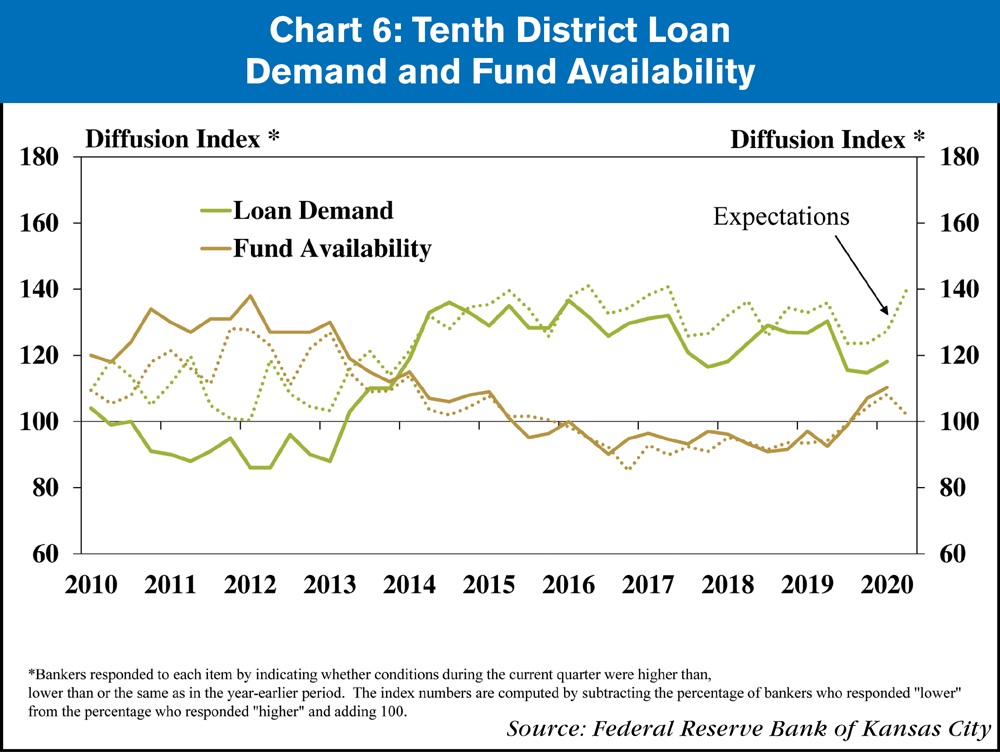

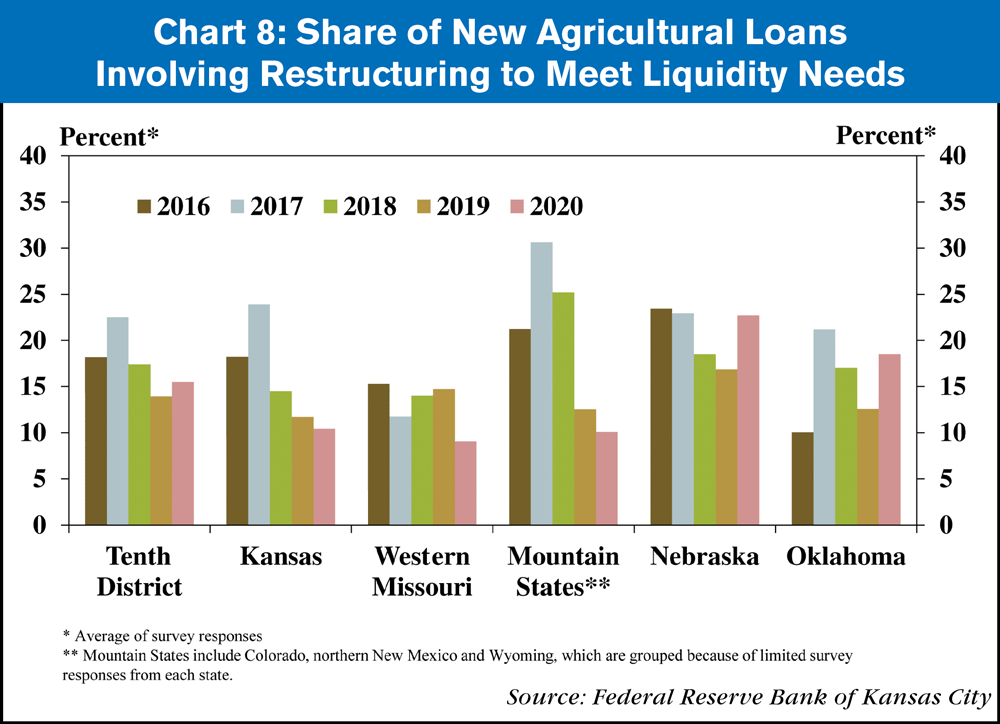
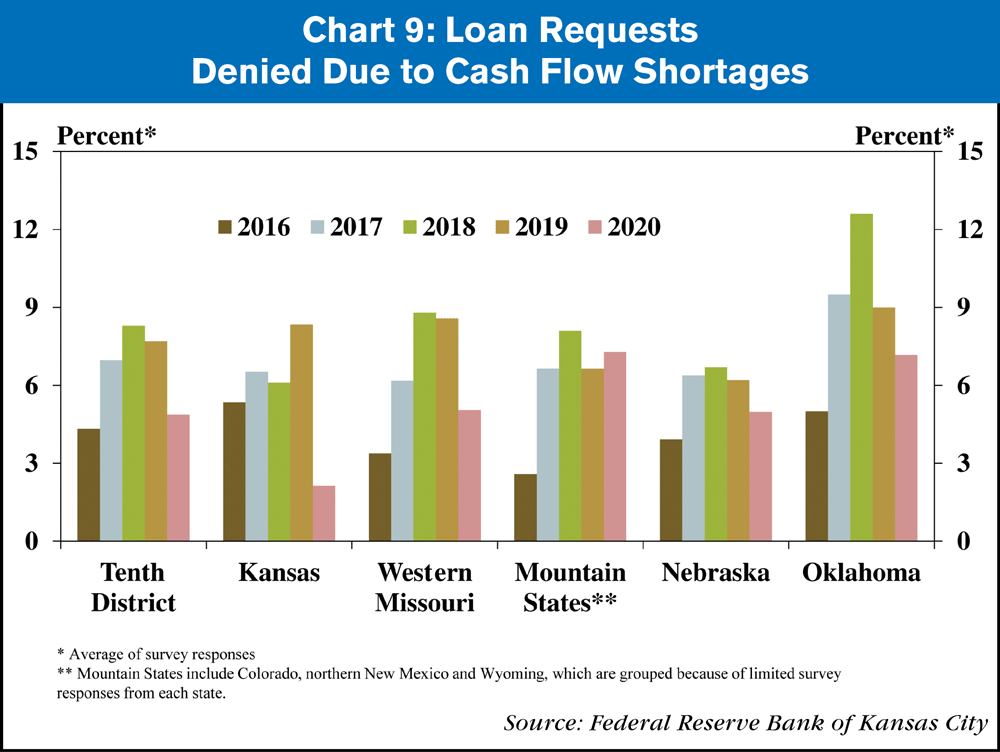
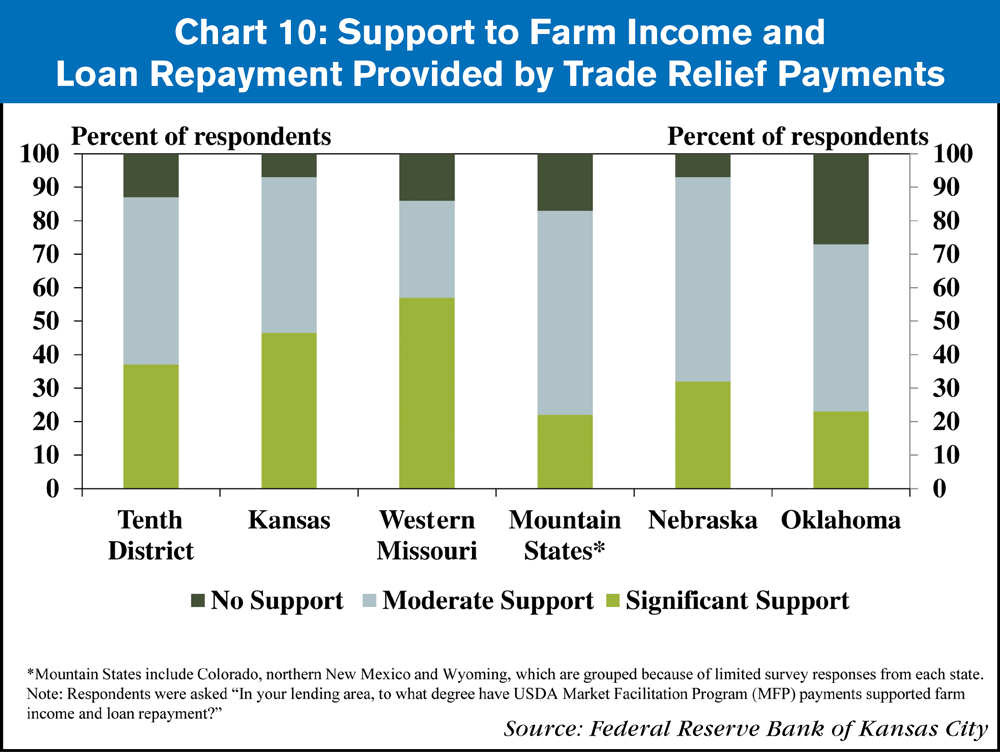





Post a comment
Report Abusive Comment